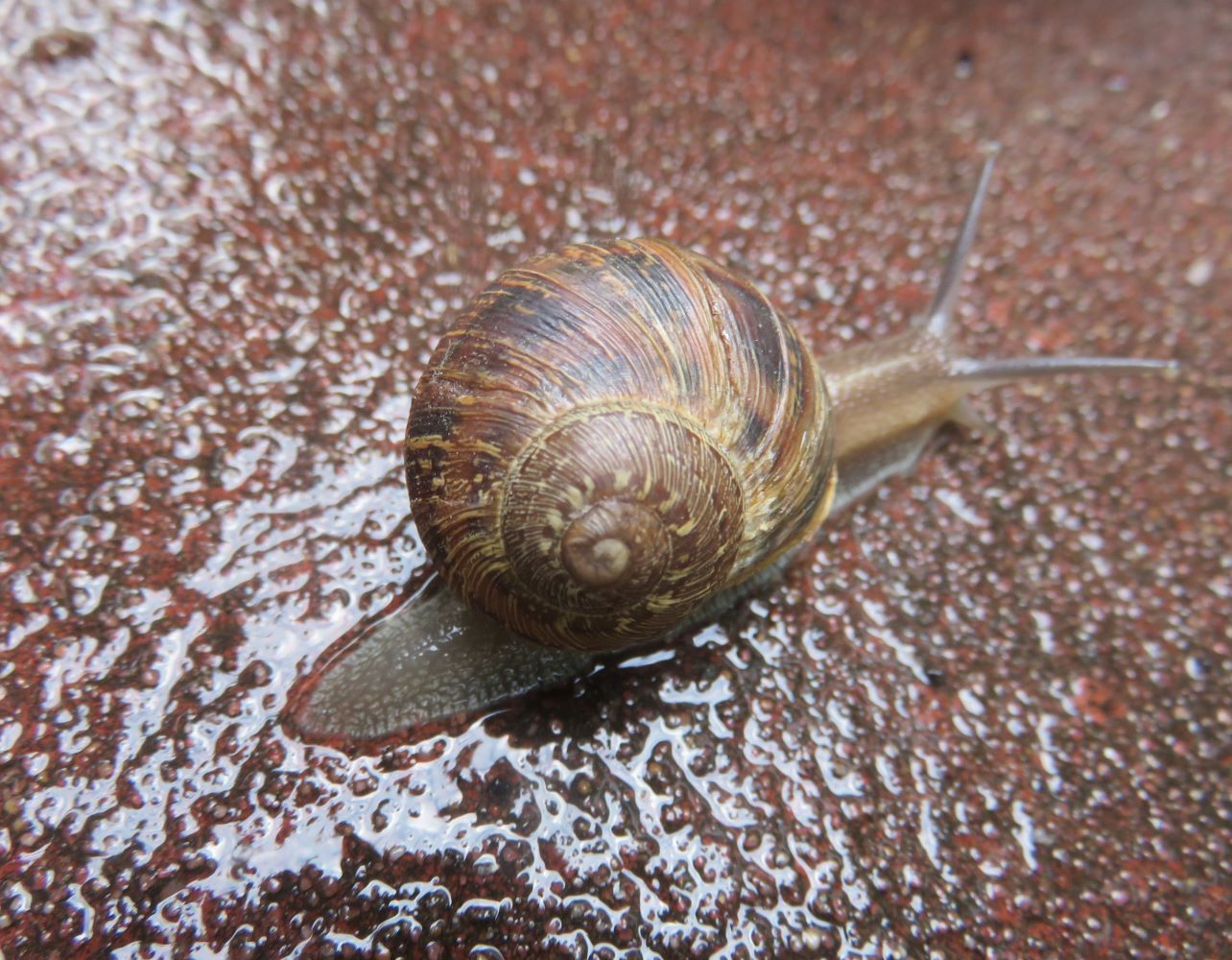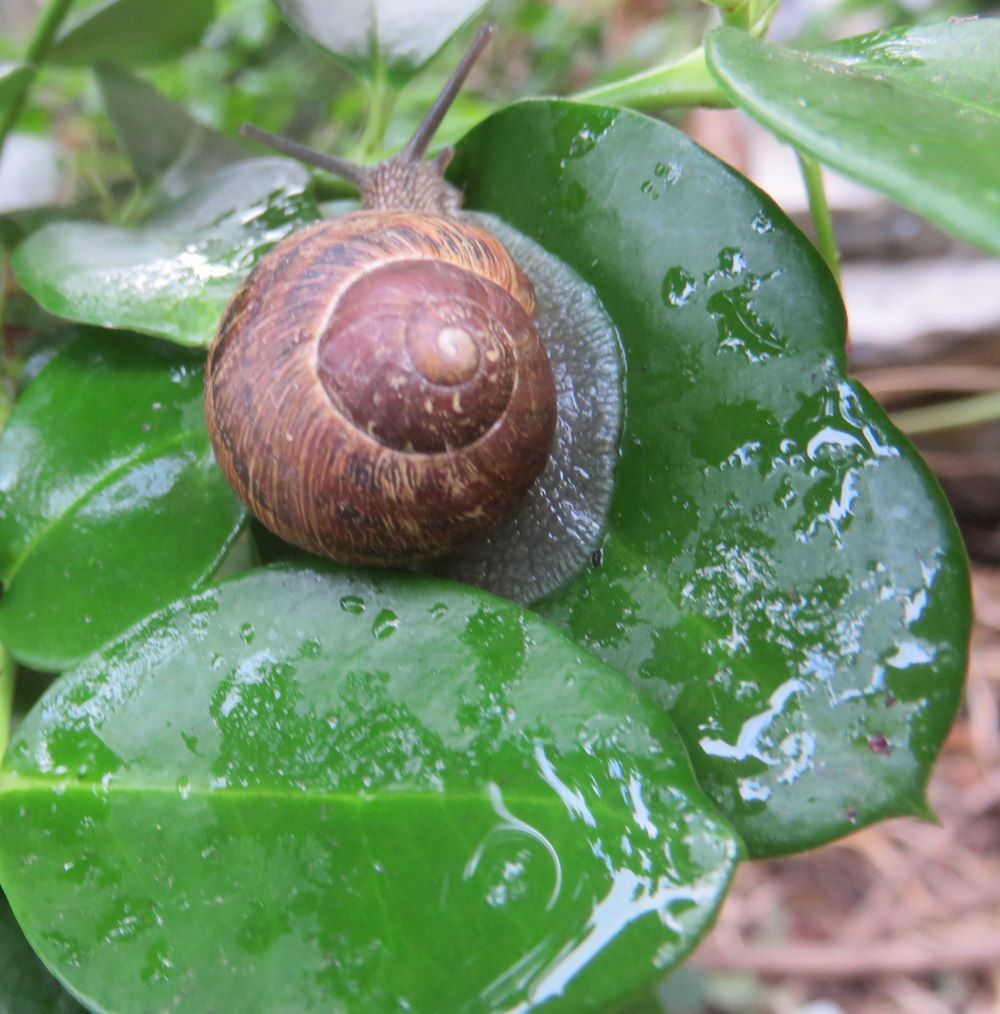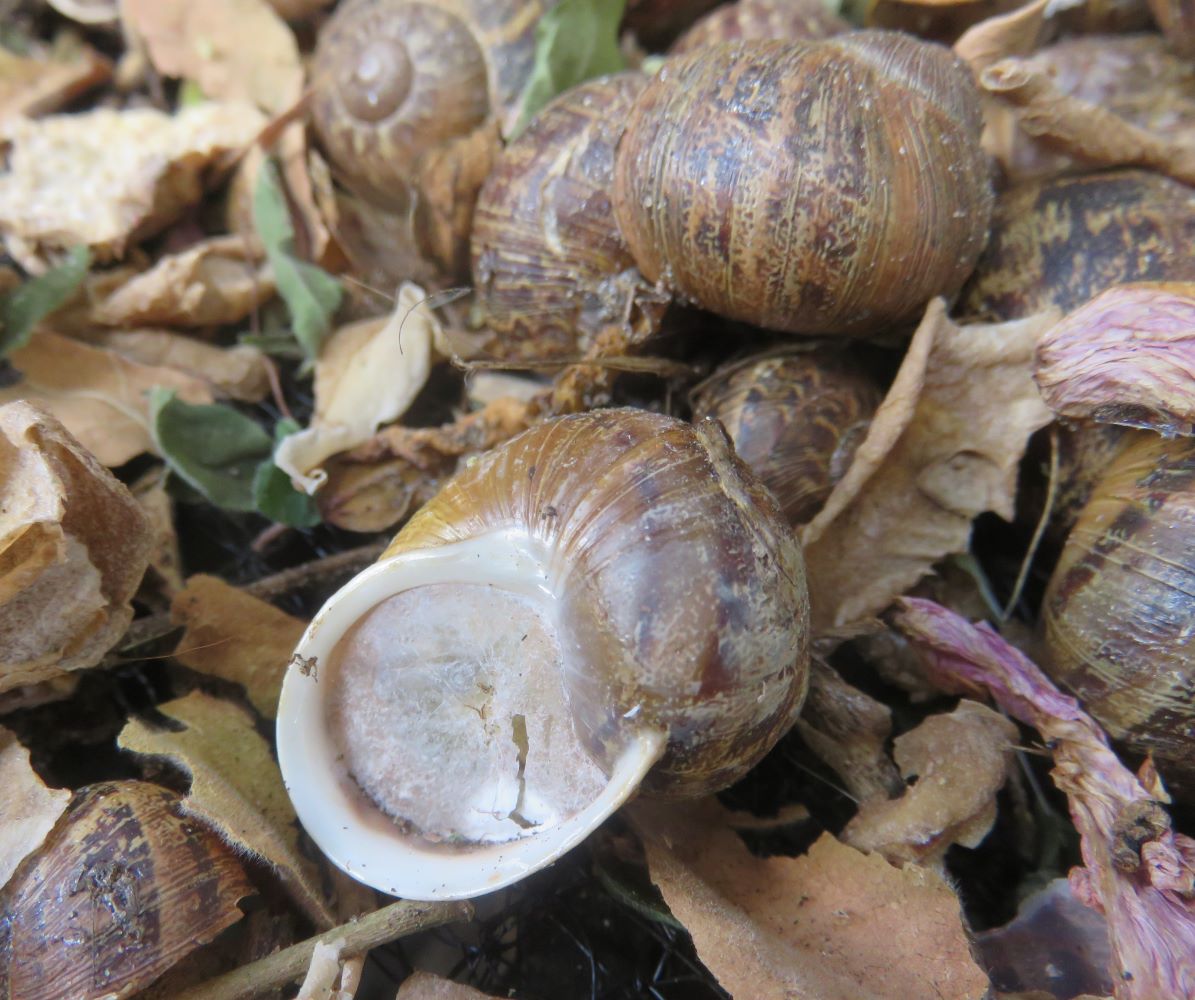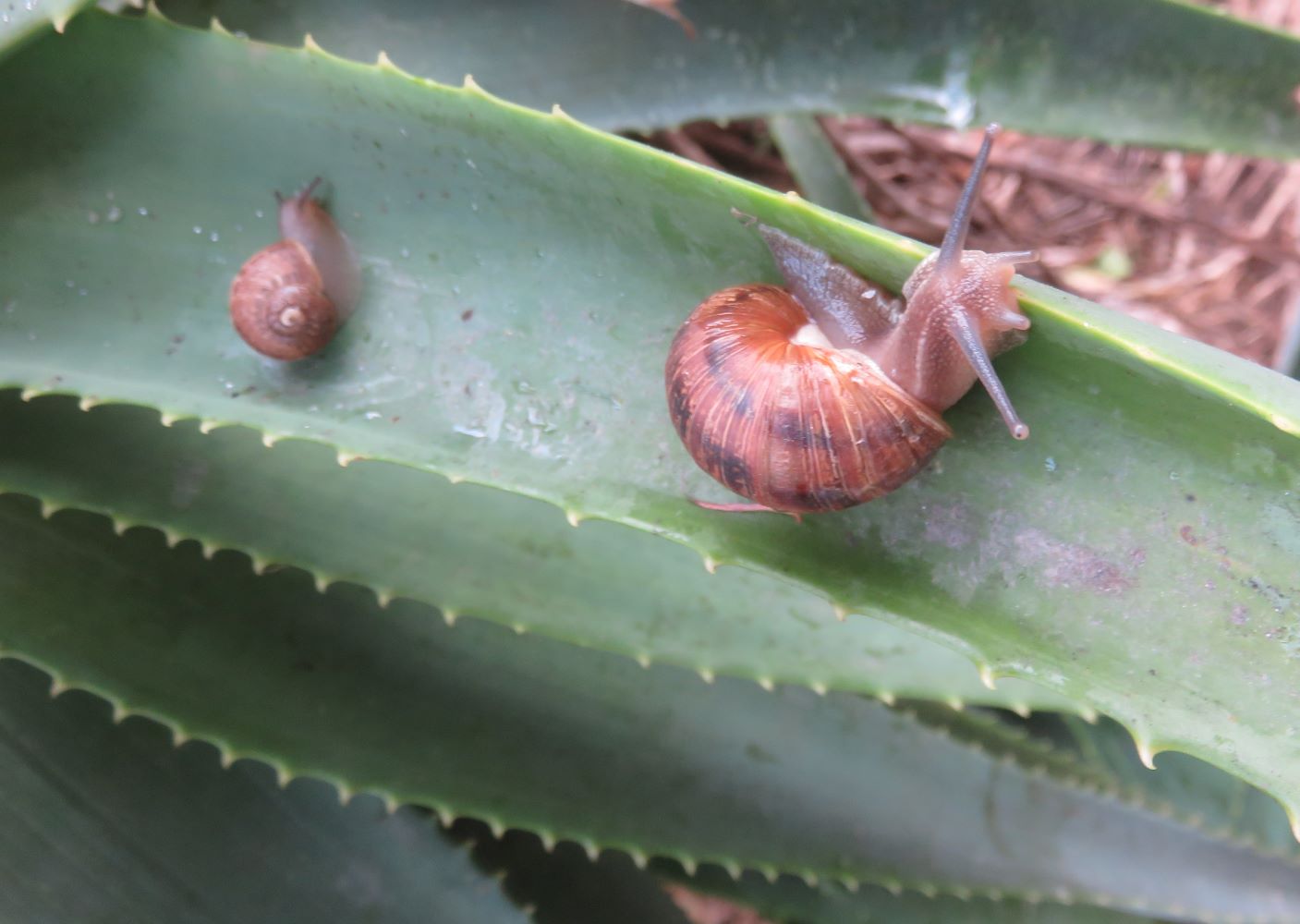Dear Reader, in this age of AI created content, please support with your goodwill someone who works harder to provide the human-made. Sign up at the top of the lefthand column or bottom of this page. You will receive my hand illustrated monthly newsletter RESTORE NATURE and access to the biodiversity garden design course as I write...and nothing else, I respect your time. I am also removing the advertizing as best I can as its become intrusive inappropriate and pays me nothing.
Snails move on one foot !
 Snails move by rippling the muscles in their soft foot in a wave like motion.
Snails move by rippling the muscles in their soft foot in a wave like motion.Snails moved out of the ocean ten times
Snails and slugs are molluscs. The molluscs are very diverse with about 85 thousand species, of which the number of undescribed species is very high. On land they are the second largest phyllum (group) of animals after the Arthropods (all animals with jointed legs like insects, spiders, millipedes and springtails). In the sea molluscs are the largest group and include highly intelligent animals like the octopus. The Gastropods, or snails and slugs are by far the largest group (about 80%) of molluscs.
Gastropod means 'stomach foot'. The animals have only one large soft foot, which runs along under the belly. A snail is generally the word applied to gastropods with shells.
Snails first evolved in the ocean, and then moved onto land. This did not happen just once. There were at least ten independent evolutionary transitions from marine to land snails.
Snails have not become fully terrestrial, being very dependent on water, and prone to drying out, but yet they have multiplied and diversified very successfully on land. Though their bodies are moist, and they continuously shed water as they move, they can also survive dry periods in a dormant state. Land snails have preserved some of the characteristics of aquatic creatures, so that some are amphibians and can live both in and out of water, and some have lungs while others breathe through gills.
Most garden snails belong to the pulmonate group of Gastropods, meaning they have lungs, or breathe air. The other snails found on land mostly belong to the Caenogastropoda group with gills and an operculum (door). They breath or take in oxygen via exchange with water and live in much damper habitats.
 Under the cover of darkness, or rain, snails move around looking for food and mates
Under the cover of darkness, or rain, snails move around looking for food and matesLocomotion: How snails move
Snails propel themselves forward by contracting the muscles of their sucker-like single foot in a waves. You can see this motion if you put them on a piece of glass. It is not a very efficient way of moving and their speed is proverbially slow, averaging at less than a mm per second depending on the species. The foot is covered with small hair like structures called epithelial cilia and exudes mucus to smooth the journey over rough surfaces, reducing friction and the risk of injury as well as helping their bodies not to dry out. The mucus enables them to crawl over the edge of a razor blade without being injured.
 When the snails is in suspended animation, a skin of dried mucus, the epiphragm, protects them from desiccation. Aquatic snails have a hard door called an operculum.
When the snails is in suspended animation, a skin of dried mucus, the epiphragm, protects them from desiccation. Aquatic snails have a hard door called an operculum.When snails don't move !
They may have a shell to retreat into, but when snails venture out of the shell, their moist slimy skin is vulnerable to desiccation. This may be why they are nocturnal feeders, or only appear during the day after rain. They shelter in dark places under rotting wood and leaves, in crevices in walls, as well as under artificial materials, and often climb plants to shelter under living leaves. If they have a choice, they seem to prefer smooth surfaces like plastic, ceramics and the leaves of large succulents. They retreat into their shells when the weather gets hostile, hibernating during cold winters, and living off their stored fat, or estivating during very dry hot summers. Snails protect themselves from desiccation by sealing the entrance to their shell with a parchment like dried crust of mucus called an epiphragm and then go into suspended animation where they can survive without water for months.
 Snails move by preference on smooth surfaces, like waxy leaves and plastic.
Snails move by preference on smooth surfaces, like waxy leaves and plastic.------
home page for links to all my articles on natural, wildlife friendly, regenerative gardening
------

Restore Nature Newsletter
I've been writing for four years now and I would love to hear from you
Please let me know if you have any questions, comments or stories to share on gardening, permaculture, regenerative agriculture, food forests, natural gardening, do nothing gardening, observations about pests and diseases, foraging, dealing with and using weeds constructively, composting and going offgrid.
SEARCH
Order the Kindle E-book for the SPECIAL PRICE of only
Prices valid till 30.09.2023
Recent Articles
-
garden for life is a blog about saving the earth one garden at a time
Apr 18, 25 01:18 PM
The garden for life blog has short articles on gardening for biodiversity with native plants and regenerating soil for climate amelioration and nutritious food -
Cape Flats Sand Fynbos, Cape Town's most endangered native vegetation!
Apr 18, 25 10:36 AM
Cape Flats Sand Fynbos, a vegetation type found in the super diverse Cape Fynbos region is threatened by Cape Town's urban development and invasive alien plants -
Geography Research Task
Jan 31, 25 11:37 PM
To whom it may concern My name is Tanyaradzwa Madziwa and I am a matric student at Springfield Convent School. As part of our geography syllabus for this
"How to start a profitable worm business on a shoestring budget
Order a printed copy from "Amazon" at the SPECIAL PRICE of only
or a digital version from the "Kindle" store at the SPECIAL PRICE of only
Prices valid till 30.09.2023







